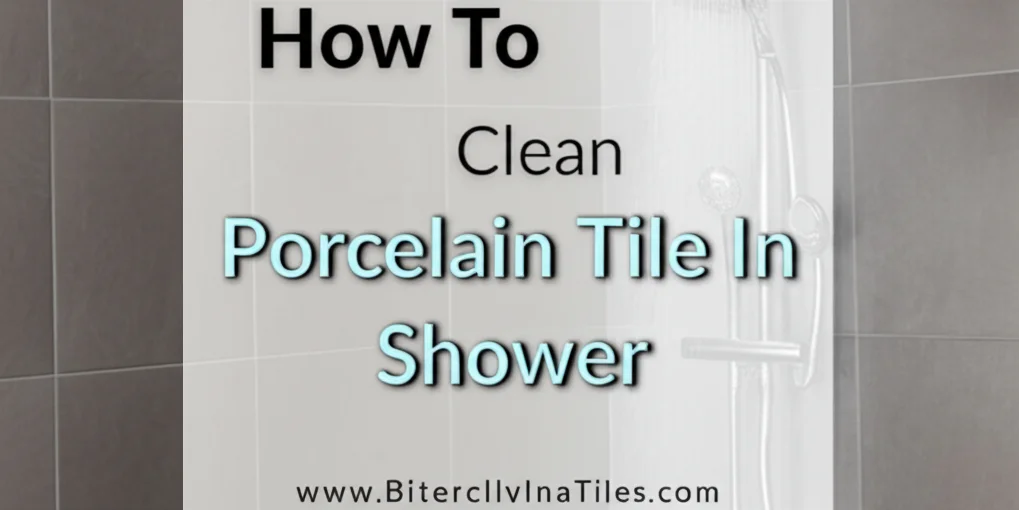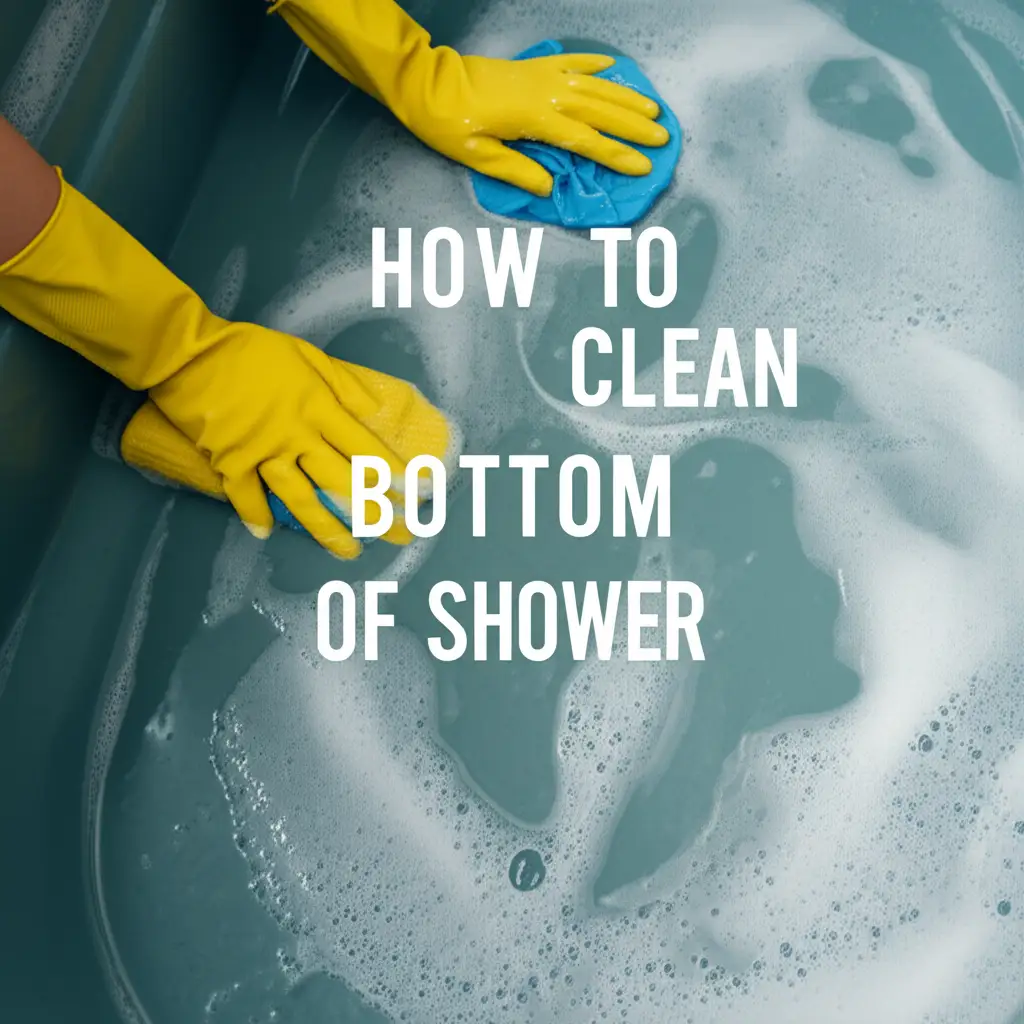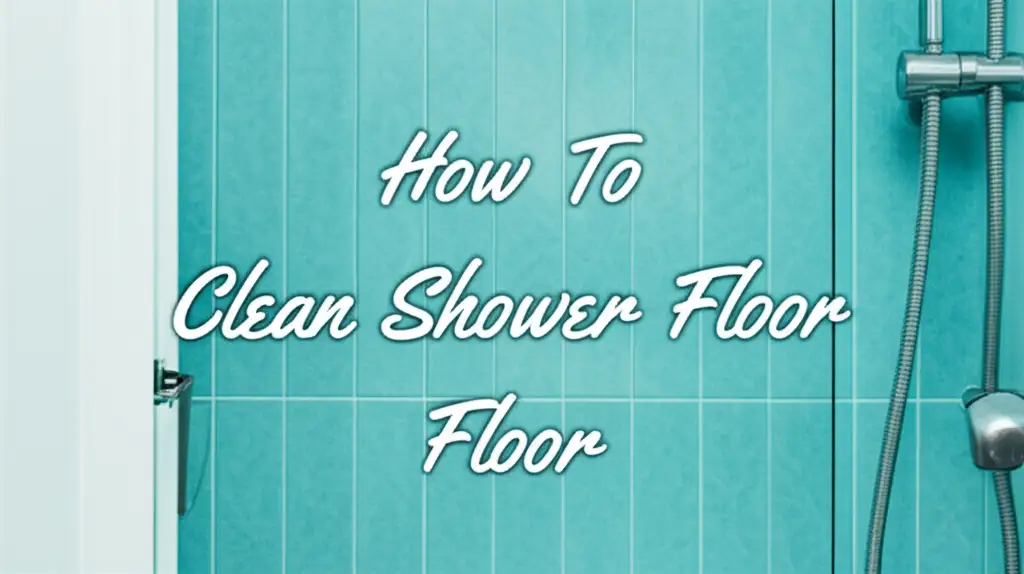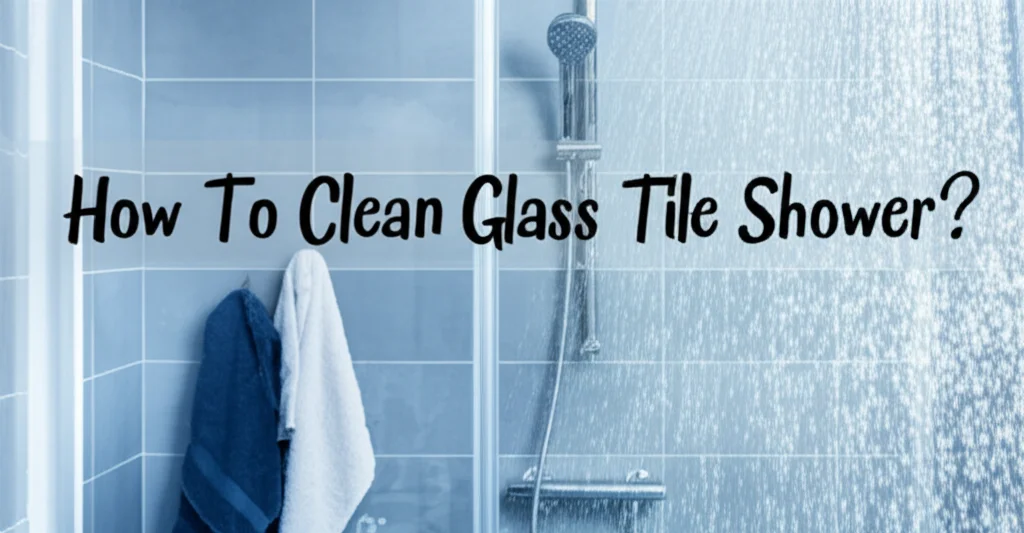· Bathroom Cleaning · 19 min read
How To Clean Porcelain Tile In Shower

The Ultimate Guide: What Is The Best Way To Clean Porcelain Tile In Shower
Maintaining a pristine bathroom is a challenge many homeowners face, with shower tiles often becoming the battleground against soap scum, hard water stains, and mildew. Porcelain tile, while durable and beautiful, requires proper care to maintain its elegant appearance. What is the best way to clean porcelain tile in shower areas?
This question plagues many homeowners seeking to restore the shine to their bathroom tiles without causing damage. Porcelain’s non-porous surface makes it resistant to moisture and stains, but improper cleaning methods can dull its finish over time.
In this comprehensive guide, we’ll explore effective cleaning techniques, recommended products, and preventative measures to keep your porcelain tile shower looking spectacular for years to come.
Takeaway
- Use pH-neutral cleaners specifically formulated for porcelain tiles
- Clean regularly with gentle methods before heavy buildup occurs
- Create homemade solutions with vinegar or baking soda for natural cleaning
- Seal grout lines, not porcelain tiles, to prevent moisture damage
- Maintain daily with a squeegee to prevent water spots and mineral buildup
The best way to clean porcelain tile in shower enclosures is to use pH-neutral cleaners specifically designed for tile, maintain a regular cleaning schedule, and prevent buildup with daily maintenance like squeegeeing after each use.
Understanding Porcelain Tile: Properties and Care Requirements
Porcelain tile stands out as a premium choice for shower installations due to its exceptional qualities. Unlike ceramic, porcelain is fired at higher temperatures, resulting in a denser, less porous material that naturally resists water absorption. This characteristic makes it ideal for wet environments but also influences how it should be cleaned.
Porcelain tiles come in two main varieties: glazed and unglazed. Glazed porcelain features a protective layer that enhances stain resistance but may become slippery when wet. Unglazed porcelain offers superior slip resistance but might be more susceptible to staining if not properly maintained. Understanding which type you have installed helps determine the appropriate cleaning approach.
Most importantly, porcelain’s durability doesn’t mean it’s impervious to damage. Harsh, acidic cleaners can etch the surface over time, while abrasive scrubbers might scratch the finish. The key to maintaining porcelain tile is respecting its properties by using gentle yet effective cleaning methods.
The grout between porcelain tiles is typically more vulnerable than the tiles themselves. While porcelain resists moisture, grout can absorb water and harbor mold and mildew if not properly sealed and maintained. A comprehensive cleaning routine addresses both the tiles and the grout for complete shower maintenance.
Regular cleaning prevents buildup that can lead to more aggressive cleaning needs later. When maintained properly, porcelain tile can maintain its beauty for decades, making it a worthwhile investment for shower installations.
Daily Maintenance: Preventing Buildup on Porcelain Shower Tiles
The secret to keeping porcelain shower tiles looking immaculate isn’t found in aggressive deep cleaning but rather in consistent daily maintenance. Preventing buildup is significantly easier than removing it after it has accumulated and hardened on your beautiful tiles.
After each shower, spend just 30 seconds using a squeegee to remove water from the tiles. This simple habit eliminates the primary cause of soap scum and hard water spots – evaporating water that leaves minerals behind. Keeping a squeegee hanging in your shower serves as a visual reminder of this essential step.
Encourage all household members to lightly spray the shower walls with a daily shower cleaner after the final rinse. These spray-and-leave formulations are designed to prevent soap residue and mineral deposits from adhering to tile surfaces. For a homemade alternative, mix equal parts white vinegar and water in a spray bottle, though this should be avoided if you have natural stone elements in your shower.
Proper ventilation plays a crucial role in maintaining porcelain tile. Always run the bathroom fan during and for 30 minutes after showering to reduce humidity levels that can promote mold and mildew growth. If your bathroom lacks adequate ventilation, consider installing a dehumidifier or keeping the door open when possible.
Soft microfiber cloths should be kept nearby for quick spot cleaning when you notice any developing issues. Unlike abrasive sponges, microfiber effectively cleans without risking scratches to your porcelain’s surface.
By implementing these daily maintenance habits, you’ll significantly reduce the frequency and intensity of deep cleaning sessions required, preserving your porcelain tile’s beauty with minimal effort.
Best Cleaning Products for Porcelain Shower Tiles
Selecting the appropriate cleaning products for your porcelain tile shower makes a significant difference in both cleaning effectiveness and preserving your tile’s appearance. The market offers numerous options, but not all are suitable for porcelain surfaces.
Commercial Cleaners
For optimal results, look for pH-neutral cleaners specifically formulated for porcelain tile. These balanced formulations effectively remove dirt and grime without damaging the tile surface or grout. Popular brands include:
- Bona Stone, Tile & Laminate Cleaner
- Black Diamond Stoneworks Tile & Grout Cleaner
- Aqua Mix Concentrated Stone & Tile Cleaner
Avoid products containing harsh chemicals like bleach, ammonia, or highly acidic compounds, as these can damage grout and potentially discolor porcelain over time. Even cleaners marketed as “all-purpose” may contain ingredients too harsh for regular use on porcelain.
Natural Cleaning Solutions
If you prefer eco-friendly alternatives, several natural options prove effective for routine cleaning:
- Vinegar Solution: Mix equal parts white vinegar and warm water in a spray bottle. This solution cuts through soap scum effectively, though it should be used sparingly on grout as the acidity can degrade unsealed grout over time.
- Baking Soda Paste: Create a paste with baking soda and water to target stubborn stains. Apply to problem areas, let sit for 10-15 minutes, then scrub gently with a soft brush before rinsing thoroughly.
- Hydrogen Peroxide: A 3% solution helps eliminate mold and mildew without the harsh effects of bleach. Spray directly on affected areas, wait 10 minutes, then rinse clean.
Specialized Cleaners for Specific Issues
Different shower cleaning challenges may require targeted solutions:
- For hard water deposits, look for products containing mild acids like citric acid.
- For mold and mildew, enzyme-based cleaners offer effective removal without harsh chemicals.
- For soap scum, alkaline-based cleaners specifically formulated for this purpose work best.
Always test any new cleaner on an inconspicuous area first to ensure it doesn’t discolor or damage your specific porcelain tile. The best cleaner for porcelain tile in a shower environment is one that balances effective cleaning power with gentle treatment of your tile and grout surfaces.
Step-by-Step Cleaning Process for Porcelain Shower Tiles
Following a systematic approach ensures your porcelain shower tiles receive thorough, effective cleaning without damage. This method addresses both regular maintenance and deeper cleaning needs.
Preparation
- Remove all shower items (shampoo bottles, soap, etc.)
- Ensure proper ventilation by turning on the bathroom fan or opening windows
- Put on rubber gloves to protect your hands from cleaning chemicals
- Pre-rinse tiles with warm water to loosen surface dirt and soap residue
Regular Cleaning Procedure
Apply cleaner: Spray your chosen pH-neutral porcelain tile cleaner or homemade solution evenly across all tile surfaces, working from top to bottom to prevent streaking.
Allow dwell time: Let the cleaner sit for 3-5 minutes (or according to product instructions) to break down soap scum and dirt. Don’t let it dry on the surface.
Gentle scrubbing: Using a soft sponge or microfiber cloth, wipe the tiles in circular motions. For textured porcelain, a soft brush may be necessary to clean within the texture.
Focus on grout lines: Pay special attention to grout lines using a soft brush specifically designed for grout. Move the brush back and forth along the lines rather than across them to prevent damage.
Thorough rinsing: Rinse all surfaces completely with clean, warm water. A handheld shower head works perfectly for this purpose, ensuring no cleaning residue remains.
Drying: Wipe down all surfaces with a clean, dry microfiber cloth or use a squeegee to prevent water spots and streaking.
Deep Cleaning Process
For tiles with significant buildup or staining, follow these additional steps:
- Create a paste of baking soda and water for stubborn areas
- Apply directly to problem spots and let sit for 10-15 minutes
- Gently scrub with a soft brush
- Rinse thoroughly and dry as above
For particularly challenging situations involving mold or mildew, an old toothbrush dipped in hydrogen peroxide can help address corners and tight spaces that are difficult to reach with larger tools.
This step-by-step cleaning process preserves the beauty of your porcelain tiles while effectively removing built-up grime and soap scum. Consistency in following these steps makes each cleaning session more efficient and helps maintain your shower’s appearance between deep cleanings.
Tackling Tough Stains and Buildup on Porcelain Tile
Even with regular maintenance, porcelain shower tiles occasionally develop stubborn stains or buildup that resist routine cleaning methods. These challenges require targeted approaches to restore your tiles’ appearance without causing damage.
Mineral Deposits and Hard Water Stains
Hard water deposits leave whitish, chalky residue that can be particularly difficult to remove, especially in areas with high mineral content in the water supply.
- Create a solution of equal parts white vinegar and warm water
- Spray liberally on affected areas and allow to sit for 10-15 minutes
- Scrub gently with a soft brush or non-abrasive pad
- Rinse thoroughly with clean water
- For persistent deposits, apply a commercial calcium, lime, and rust remover designed for porcelain surfaces, following manufacturer instructions carefully
Soap Scum Removal
Soap scum creates a dull, filmy layer that obscures your tile’s natural shine:
- Heat white vinegar until warm (not boiling)
- Mix with equal parts dish soap in a spray bottle
- Apply to soap scum areas and let dwell for 15-20 minutes
- Wipe with a damp microfiber cloth
- Rinse thoroughly
Rust Stains
Metal shower caddies or shaving implements can sometimes leave rust stains on porcelain:
- Create a paste using cream of tartar and hydrogen peroxide
- Apply directly to rust stains
- Let sit for 10 minutes
- Gently scrub with a soft brush
- Rinse completely
Mold and Mildew
For these persistent bathroom invaders:
- Mix 1 part hydrogen peroxide with 2 parts water
- Spray directly on affected areas
- Allow to bubble and work for 10 minutes
- Scrub gently with a soft brush
- Rinse thoroughly and dry completely
For exceptionally stubborn stains that resist these treatments, a poultice method may be necessary. Mix baking soda with just enough water to create a thick paste, apply to the stain, cover with plastic wrap, and leave overnight before removing and rinsing.
Remember that prevention remains the best approach for maintaining porcelain tile. After addressing these tough stains, consider implementing a more rigorous daily maintenance routine to prevent their recurrence. For extremely stubborn cases that don’t respond to these methods, consult with a professional tile cleaner who specializes in porcelain surfaces.
Grout Cleaning and Maintenance for Porcelain Shower Tiles
While porcelain tiles are relatively low-maintenance, the grout between them requires special attention. Grout is typically more porous than porcelain, making it susceptible to mold, mildew, and staining. Proper grout maintenance is essential for the overall appearance of your shower.
Regular Grout Cleaning
For routine grout maintenance:
- Mix a solution of warm water and pH-neutral tile cleaner
- Apply directly to grout lines using a spray bottle or brush
- Let the solution sit for 5-10 minutes to penetrate
- Scrub with a soft grout brush, moving along the lines rather than across them
- Rinse thoroughly with clean water
- Dry completely with a microfiber cloth
Deep Cleaning Discolored Grout
For grout that has become discolored over time:
- Create a paste of baking soda and water
- Apply directly to grout lines
- Spray with equal parts water and white vinegar (the solution will bubble)
- Once bubbling stops, scrub with a grout brush
- Rinse completely and dry
For particularly stubborn grout staining:
- Apply a commercial oxygen bleach product formulated for grout (avoid chlorine bleach as it can damage colored grout)
- Follow product instructions for application time
- Scrub gently with a grout brush
- Rinse thoroughly
Grout Sealing
Perhaps the most important aspect of grout maintenance is proper sealing:
- Clean grout thoroughly and allow to dry completely (24-48 hours)
- Apply a quality grout sealer specifically designed for bathroom use
- Follow manufacturer instructions for application method and drying time
- Reapply sealer annually or as recommended by the manufacturer
Unlike grout, porcelain tiles typically don’t require sealing due to their naturally low porosity. However, unglazed porcelain may benefit from sealing—check with your tile manufacturer if you’re unsure.
Signs that grout needs resealing include water absorption (darkening of grout when wet) or increased staining. Regular resealing prevents moisture penetration that can lead to mold growth and deterioration.
For severely damaged grout that cannot be cleaned effectively, consider consulting a professional about grout renewal or replacement options. Many companies offer specialized services for cleaning porcelain shower tile and grout that can restore your shower’s appearance without the need for complete renovation.
Tools and Equipment for Effective Porcelain Tile Cleaning
The right tools can make porcelain tile cleaning more efficient while preventing damage to your beautiful shower surfaces. Investing in quality cleaning implements specifically designed for tile care will improve your results and protect your investment.
Essential Cleaning Tools
Squeegee: A high-quality rubber squeegee with a comfortable handle makes daily water removal quick and easy, preventing mineral deposits and water spots.
Microfiber Cloths: Soft, absorbent microfiber cloths clean effectively without scratching and dry surfaces completely, preventing water spots. Keep several on hand specifically for bathroom cleaning.
Spray Bottles: Dedicated spray bottles for different cleaning solutions allow precise application without waste. Label each clearly to avoid confusion.
Grout Brush: A narrow brush specifically designed for grout lines allows targeted cleaning without damaging the surrounding tile. Look for medium-soft bristles that clean effectively without scratching.
Soft Scrub Brushes: For textured porcelain tiles, soft nylon brushes can clean within the texture without scratching. Avoid metal bristles or highly abrasive scrubbers.
Specialized Equipment
For more intensive cleaning needs:
Steam Cleaner: A handheld steam cleaner can effectively clean both tiles and grout without chemicals, using just water heated to high temperatures. This method is particularly effective for sanitizing and deep cleaning.
Grout Sealer Applicator: Precision applicators designed specifically for grout sealing reduce mess and ensure proper coverage. These typically feature small roller wheels or brush tips for controlled application.
Extension Handles: For high shower walls or ceilings, extension handles for brushes and squeegees prevent the need for ladders or straining.
What to Avoid
Certain tools can damage porcelain tile and should be avoided:
- Steel wool or metal brushes
- Highly abrasive scrubbing pads
- Pressure washers (too powerful for indoor shower applications)
- Acidic cleaners in spray bottles (can cause aerosolization of harmful chemicals)
For most homeowners, a basic kit including a quality squeegee, microfiber cloths, a grout brush, and appropriate cleaning solutions is sufficient for maintaining porcelain shower tile. These tools, when used consistently with proper techniques, will keep your shower looking its best while extending the life of both tiles and grout.
Preventative Measures and Long-Term Care
Preserving the beauty of your porcelain tile shower extends beyond regular cleaning. Implementing preventative strategies can significantly reduce maintenance requirements and extend the life of your shower installation.
Water Quality Management
Hard water is often the primary culprit behind mineral deposits on porcelain tile:
- Consider installing a whole-house water softener if your area has particularly hard water
- For a less expensive solution, attach a shower head filter that reduces mineral content
- Use distilled white vinegar monthly to descale shower heads and faucets that may deposit minerals onto tiles
Ventilation Improvements
Proper moisture control prevents mold and mildew development:
- Ensure your bathroom exhaust fan vents properly to the outside (not just into an attic)
- Run the fan during showers and for 30 minutes afterward
- Consider a timer switch for your fan to ensure adequate run time
- Leave shower doors or curtains open after use to promote air circulation
- Install a dehumidifier in chronically damp bathrooms
Product Selection
Choose shower products that minimize residue:
- Opt for liquid soaps instead of bar soaps that often contain talc and leave more residue
- Select hair products without excessive oils that can create film on shower surfaces
- Store bath products on shower caddies that drain properly rather than allowing them to sit directly on tile surfaces
Scheduled Maintenance Calendar
Create a regular maintenance schedule:
- Daily: Squeegee after final shower use
- Weekly: Basic cleaning with pH-neutral cleaner
- Monthly: Deep clean tiles and grout
- Quarterly: Check grout integrity and touch up as needed
- Annually: Reseal grout and assess overall condition
Professional Services
Consider periodic professional intervention:
- Schedule professional deep cleaning annually for difficult-to-clean areas
- Have professionals reseal grout every few years for optimal protection
- Address any grout repairs promptly before water damage can occur
By implementing these preventative measures, you’ll maintain your porcelain tile shower’s appearance with less effort and expense over time. The key to longevity lies in consistent care rather than occasional aggressive cleaning. With proper attention, porcelain tile showers can maintain their beauty and functionality for decades, making them one of the most durable bathroom installations available to homeowners.
Eco-Friendly and Natural Cleaning Solutions
As environmental consciousness grows, many homeowners seek effective yet eco-friendly methods to clean their porcelain tile showers. Natural cleaning solutions not only reduce chemical exposure in your home but often prove equally effective at maintaining porcelain surfaces.
Vinegar-Based Solutions
White distilled vinegar serves as a versatile cleaner for porcelain shower tiles:
Basic Vinegar Spray: Mix equal parts white vinegar and water in a spray bottle. This solution effectively cuts through soap scum and light mineral deposits.
Enhanced Vinegar Cleaner: For stronger cleaning power, heat the vinegar before mixing with water, then add 1-2 tablespoons of dish soap per cup of solution.
Citrus-Infused Vinegar: Place citrus peels (lemon, orange, or grapefruit) in a jar and cover with white vinegar. Allow to infuse for 1-2 weeks, then strain and dilute with equal parts water for a pleasantly scented natural cleaner.
Note: While vinegar is safe for porcelain, use sparingly on grout as its acidity can gradually erode unsealed grout.
Baking Soda Applications
Baking soda provides gentle abrasive action without scratching:
Baking Soda Paste: Mix baking soda with just enough water to form a spreadable paste. Apply to stained areas, let sit for 10-15 minutes, then scrub gently and rinse.
Baking Soda and Hydrogen Peroxide: For tougher stains, mix baking soda with hydrogen peroxide instead of water. This combination provides additional cleaning power for stubborn spots.
Baking Soda and Essential Oils: Add 10-15 drops of tea tree, eucalyptus, or lavender essential oil to your baking soda paste for antimicrobial properties and pleasant scent.
Enzymatic Cleaners
Natural enzyme-based cleaners break down organic matter:
- Look for commercial enzyme cleaners labeled as natural or eco-friendly
- These are particularly effective for body oils and soap residue
- They continue working after application, making them ideal for preventative maintenance
Steam Cleaning
Perhaps the most eco-friendly option of all:
- Water converted to steam sanitizes and cleans without any chemicals
- Particularly effective for grout lines and textured porcelain
- Handheld steam cleaners provide targeted cleaning in shower environments
When using natural cleaning methods for porcelain tile, consistency is key. These gentler solutions may require slightly more frequent application than harsh chemicals but provide excellent results without environmental concerns. By incorporating these eco-friendly options into your regular cleaning routine, you’ll maintain a beautiful shower while reducing your household’s chemical footprint.
FAQ: Common Questions About Cleaning Porcelain Shower Tiles
What is the best cleaner for porcelain shower tiles?
The best cleaners for porcelain shower tiles are pH-neutral products specifically formulated for porcelain or ceramic surfaces. These balanced cleaners effectively remove soap scum and water spots without damaging the tile surface or grout. For daily maintenance, a simple mixture of equal parts white vinegar and water works well, while commercial products like Black Diamond Stoneworks Tile & Grout Cleaner or Bona Stone, Tile & Laminate Cleaner are excellent for regular cleaning sessions.
How do you get stains out of porcelain tiles?
For stubborn stains on porcelain tiles, create a paste of baking soda and water, apply directly to the stain, and let sit for 10-15 minutes before scrubbing gently with a soft brush. For rust stains, a paste of cream of tartar and hydrogen peroxide is effective. Mineral deposits respond well to vinegar solutions left to dwell for several minutes. Always test any stain removal method on an inconspicuous area first, and avoid abrasive scrubbers that might scratch the tile surface.
Does baking soda clean porcelain tiles?
Yes, baking soda is an effective and safe cleaner for porcelain tiles. Its mild abrasiveness helps remove stains without scratching, while its alkaline nature helps neutralize acidic substances. For best results, mix baking soda with enough water to form a paste, apply to soiled areas, let sit for 10-15 minutes, then scrub gently and rinse thoroughly. Baking soda is particularly effective when combined with hydrogen peroxide for targeting mold and mildew in grout lines.
What is the best chemical to clean porcelain tiles?
While natural solutions are often sufficient, certain chemicals can safely and effectively clean porcelain tiles. Look for products containing mild oxygen bleach (sodium percarbonate) rather than chlorine bleach, as these effectively clean without damaging grout or discoloring tiles. Products containing enzymes break down organic matter effectively. For mineral deposits, products with mild citric acid can dissolve buildup without damaging porcelain. Always avoid muriatic acid, heavy bleach solutions, or ammonia-based products, as these can damage grout and potentially discolor porcelain over time.
How often should I clean my porcelain tile shower?
For optimal maintenance, squeegee shower walls after each use and spray with a daily shower cleaner. Conduct a basic cleaning with a pH-neutral cleaner weekly, thoroughly cleaning both tiles and grout. Perform a deeper cleaning monthly, addressing any developing stains or buildup. Inspect grout quarterly for signs of wear or mold growth, and reseal grout annually to maintain water resistance and prevent mold development.
Can I use bleach on porcelain shower tiles?
While porcelain itself is generally bleach-resistant, regular use of chlorine bleach can damage grout, causing it to erode and discolor over time. If disinfection is necessary, opt for hydrogen peroxide as a safer alternative, or use oxygen bleach products specifically formulated for tile and grout. If you must use chlorine bleach for a specific issue, dilute it properly, limit contact time, and rinse thoroughly afterward.
Final Thoughts: Maintaining Beautiful Porcelain Shower Tiles
Maintaining the pristine appearance of porcelain shower tiles doesn’t require extraordinary effort—just consistent, proper care using the right methods and products. The best way to clean porcelain tile in shower environments combines preventative maintenance with appropriate cleaning techniques tailored to porcelain’s unique properties.
Daily habits make the biggest difference in keeping your shower looking its best. Taking 30 seconds to squeegee after showering prevents the majority of hard water spots and mineral buildup that lead to more intensive cleaning needs. Coupled with proper ventilation and weekly cleaning sessions using pH-neutral products, these simple practices can dramatically reduce maintenance requirements.
Remember that while porcelain is remarkably durable, the grout between tiles requires special attention. Regular sealing and gentle cleaning preserve grout integrity, preventing water penetration that could lead to more serious issues behind your shower walls. Addressing small problems promptly prevents them from becoming major renovation projects.
Whether you prefer commercial cleaners or natural solutions, consistency is the key to success. Establish a regular cleaning schedule that works for your household, and you’ll find that maintaining porcelain shower tiles becomes a manageable task rather than a dreaded chore.
With the knowledge and techniques shared in this guide, you’re equipped to maintain beautiful, hygienic porcelain shower tiles that will continue to enhance your bathroom’s appearance and functionality for years to come. The investment of time in proper care yields long-term dividends in both aesthetics and the longevity of your shower installation.
- porcelain tile
- shower cleaning
- tile grout




